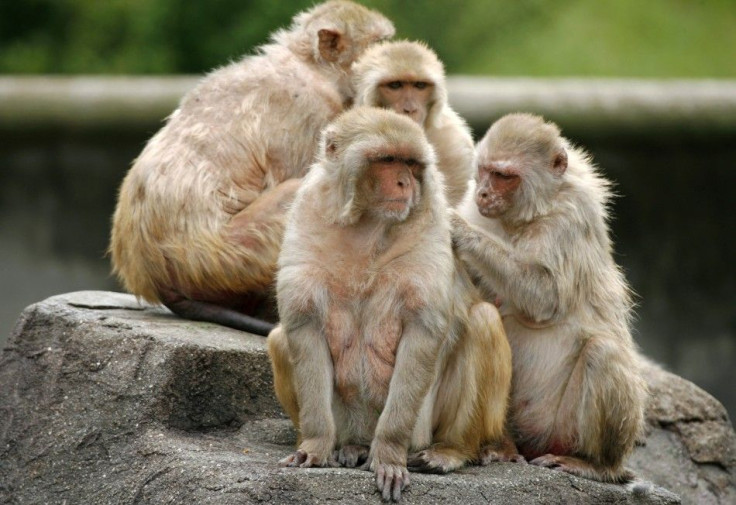Genetically Modified Monkeys First to be Born in U.S. (VIDEO)
Stem Cell Research is Their Raison D'etre

A U.S. based research facility is the new home of three monkeys named Chimero, Roku and Hex, and they bear the distinction of being the first ever genetically modified monkeys. They were created in the lab using embryos of several individuals at the National Primate Research Center in Oregon. The controversial method produced the three healthy male rhesus monkeys without any birth defects, the UK's Guardian reports. Scientists have been using this technique since the 1960's, but this is the first set of primates to successfully be bred this way. Back then, it was used to make mice, followed by sheep, rabbits, rats and cattle.
This type of stem cell research is done by mixing four-day-old embryos in a petri dish. Once they grow into an early embryonic stage called a blastocyst, they are implanted into the females for gestation. Scientists like these animals, called chimeras, because they are great tools in research like showing the processes in embryo development and how cells become specialized. This is especially important in the development of stem cell therapy. That's because the only way it works is if the embryonic cells develop into working tissue when injected into patients. It seems the stem cells work if mixed with young embryos, but not when they are grown in the lab.
"If we want to move stem cell therapies from the lab to clinics and from the mouse to humans, we need to understand what these primate cells can and can't do. We need to study them in humans, including human embryos," Shoukhrat Mitalipov, who led the research told The Guardian.
Researchers had suspected the human and monkey stem cells were different, Robin Lovell-Badge, head of genetics at the National Institute forMedical Researchin London, said in the report.
"This work supports this notion, as the macaque embryonic stem cells tested were unable to mix in with cells of the host embryos. This may be reassuring to those who worry that human embryonic stem cells could be used to make chimeric people, although in itself this should not be a concern, as such rare individuals already exist from the spontaneous merger of two early embryos. But it may be a concern for regenerative medicine if such cells are not as flexible as hoped," he said.
© Copyright IBTimes 2024. All rights reserved.




















